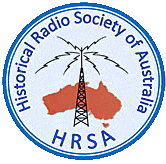More about How Your Transistor Works
Did you know:
… That Bardeen, Brattain and Shockley did not jointly invent the transistor?
That Shockley’s management skills were so bad that eight of his top engineers walked out to start Fairchild Semiconductor?
That the name ‘transistor’ might not be from ‘transfer resistor’?
That electrons do not ‘dash’ across the base region, but wander about like flies?
That the world’s first transistor radio began as an eight-transistor design, but got trimmed down to just four so that it would sell?
That Philps waited for the second generation of transistors before they started making transistor radios?
That a New Zealander, Doctor Adams, may have invented the transistor in the 1930s?
That Julius Lilienfeld certainly did patent both the junction transistor and field-effect transistor in the 1930s?
That two French engineers discovered transistor action before Bardeen and Brattain, and that French telephone companies were using the ‘transistron’ before Bell Laboratories?
That transistors are just triodes?
That nobody has ever written a complete description of how the point-contact transistor works?
Well, the Author (after many months of research) can reveal all this, and much more, to you.
The eleven chapters cover the history of semiconductors and transistors from 1873 to the final development of the now-universal Planar and Mesa designs.
You’ll meet scientists, engineers and marketers and learn about their triumphs and failures, the Companies that survive to this day and those that fell by the wayside.
And you’ll learn about the amazing techniques used: this is chemistry at melting point!
Then you’ll find out about how the transistor radio became the must-have “trannie”, and how early designs matured into the “standard six” transistor superhet, popular and increasingly collectable (how does $5000-plus for a Sony TR55 sound?)
And if you have a “dud” trannie, you’ll find complete stage-by-stage circuit descriptions and fault-finding techniques. (Spoiler, check the on/off switch and earphone socket, try a re-cap!).
How Your Transistor Radio Works is now available for members, just $20.00 plus postage from the HRSA Valve Bank: Contact Stan Snyders - details in the front of Radio Waves
|
JOIN THE HRSA NOW!
Click on the JOIN button for details

|

